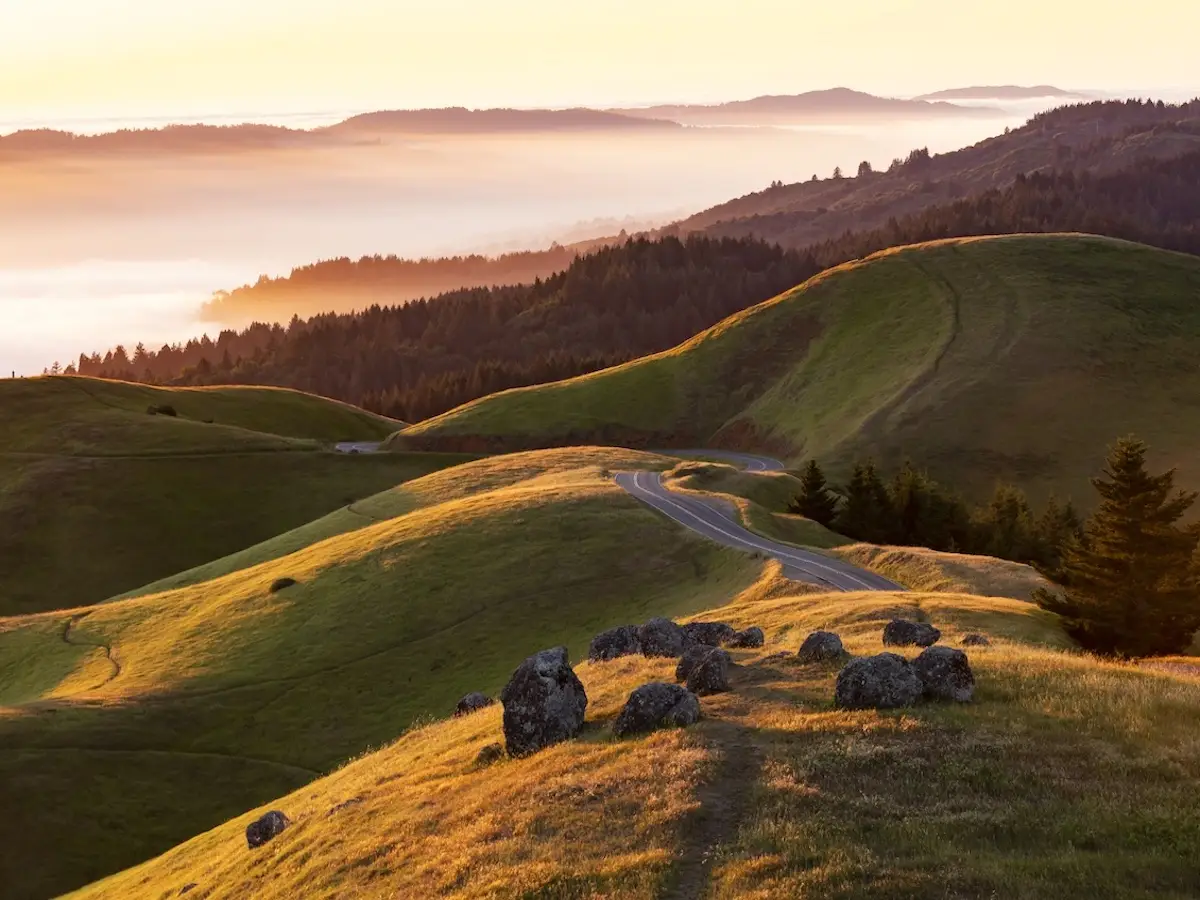Jay Tamang is a photographer who lives in Mill Valley. At the core of his photography, Tamang conveys a reverence for the beautiful phenomena of nature. In the following paragraphs, he shares his method for capturing those fleeting moments in time that result in an interesting photo. Tamang’s photography will be on display throughout June at the Mill Valley Community Center, where he’ll also hold a reception from 5:30–7:30 p.m. on June 4. A portion of all sales will be donated to support children’s education in Nepal.
Bristlecone Pine

“Nestled approximately forty minutes away from the town of Bishop, Bristlecone pine stands as a testament to time, one of the oldest trees. Here, amidst the rugged terrain, astronauts frequent this place for study.
“Venturing into the quietude of the night, I patiently await the stroke of midnight, longing for the perfect moment when the stars illuminate the heavens, painting the sky with the ethereal glow of the Milky Way. With my camera poised and shutter open, I immerse myself in the solitude of the wilderness, spending entire nights in silent communion with nature’s grandeur.
“Whether braving the darkness alone or in the company of friends, the experience is a symphony of tranquility and beauty, punctuated only by the gentle rustle of the wind through the ancient trees. Amidst this serenity, the seemingly lifeless branches of the Bristlecone pine reveal their surprising smoothness, adding an extra layer of wonder to an already captivating night beneath the stars.”
– Tamang
Bolinas Ridge
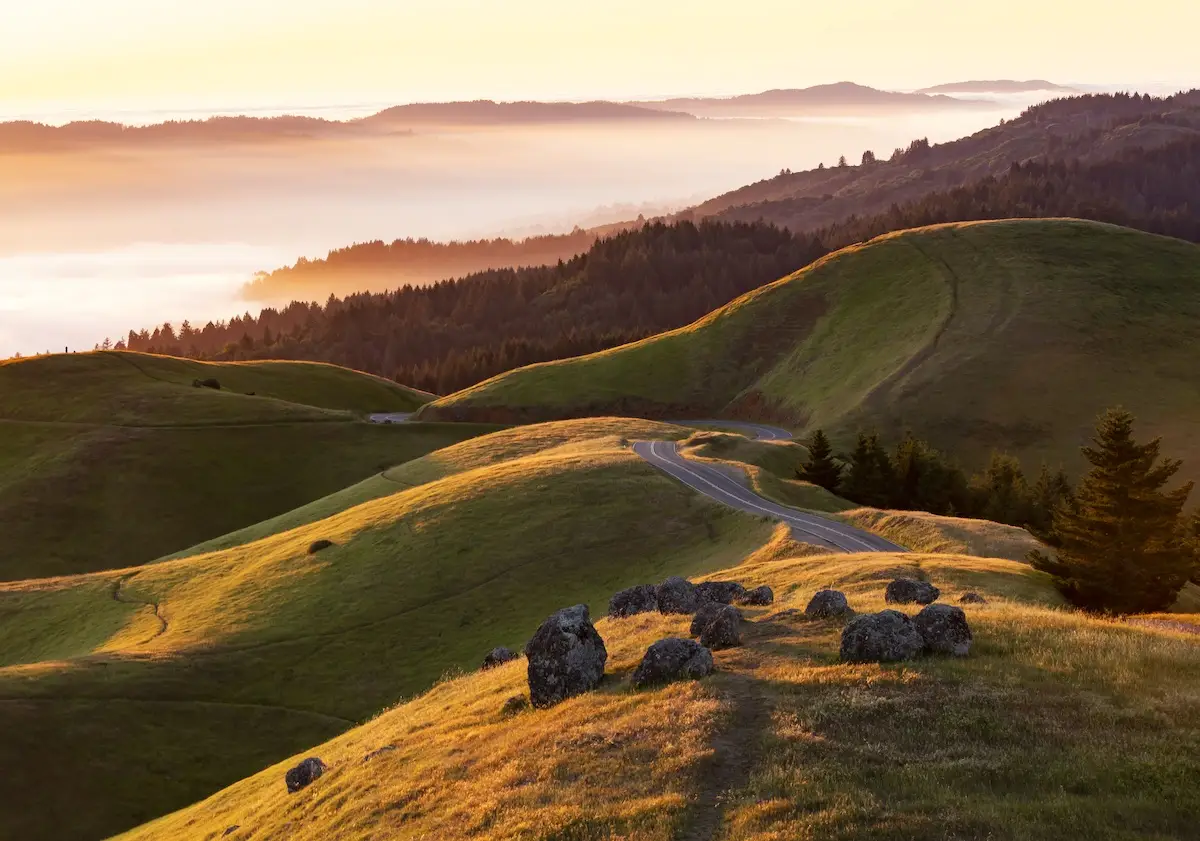
“I love Bolinas Ridge because it overlooks the ocean. When the fog drifts over the ocean and the sunlight bathes the curving hills, the light is incredibly beautiful. It feels as though I’m suspended above the heavens.”
– Tamang
Mono Lake
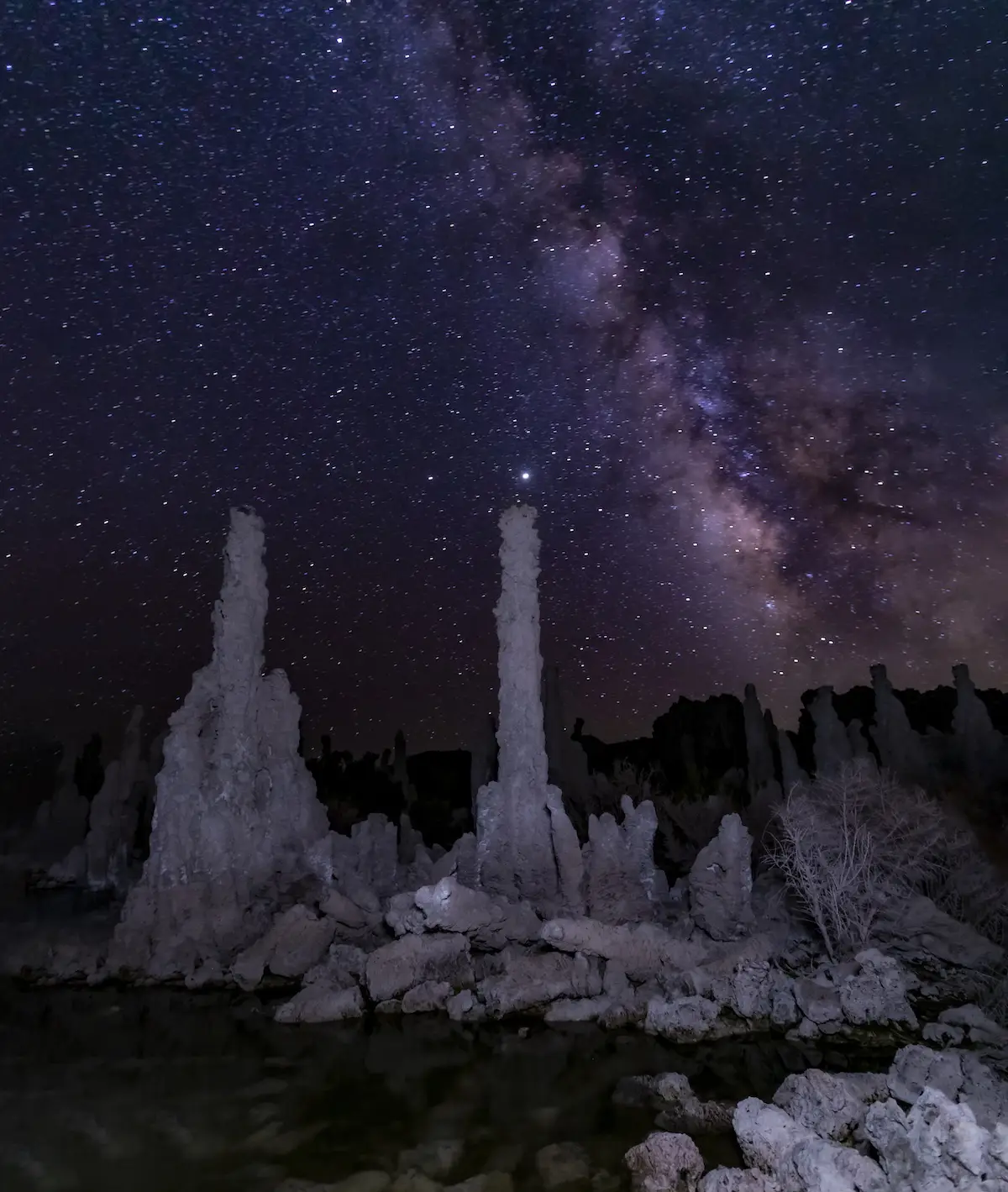
“From the outside, when you glance at Mono Lake while driving along Highway 395, you can see the vast expanse of the lake, but not the tufas. They are formed from sandstone. I typically visit around midnight or one in the morning, stroll down to these tufas, and sit amongst them, gazing. Billions of stars blanket the tufas, enveloping you in their celestial glow. Additionally, you’re treated to the breathtaking hues of the Milky Way.
“People often ask me, ‘Is that real?’ You have to experience it at the same time I did. If it’s cloudy, visibility will be limited. But if you visit on a clear, moonless night, when the Milky Way is visible, then yes, you will witness it. Nature provides the spectacle.”
– Tamang
Horseshoe Bend
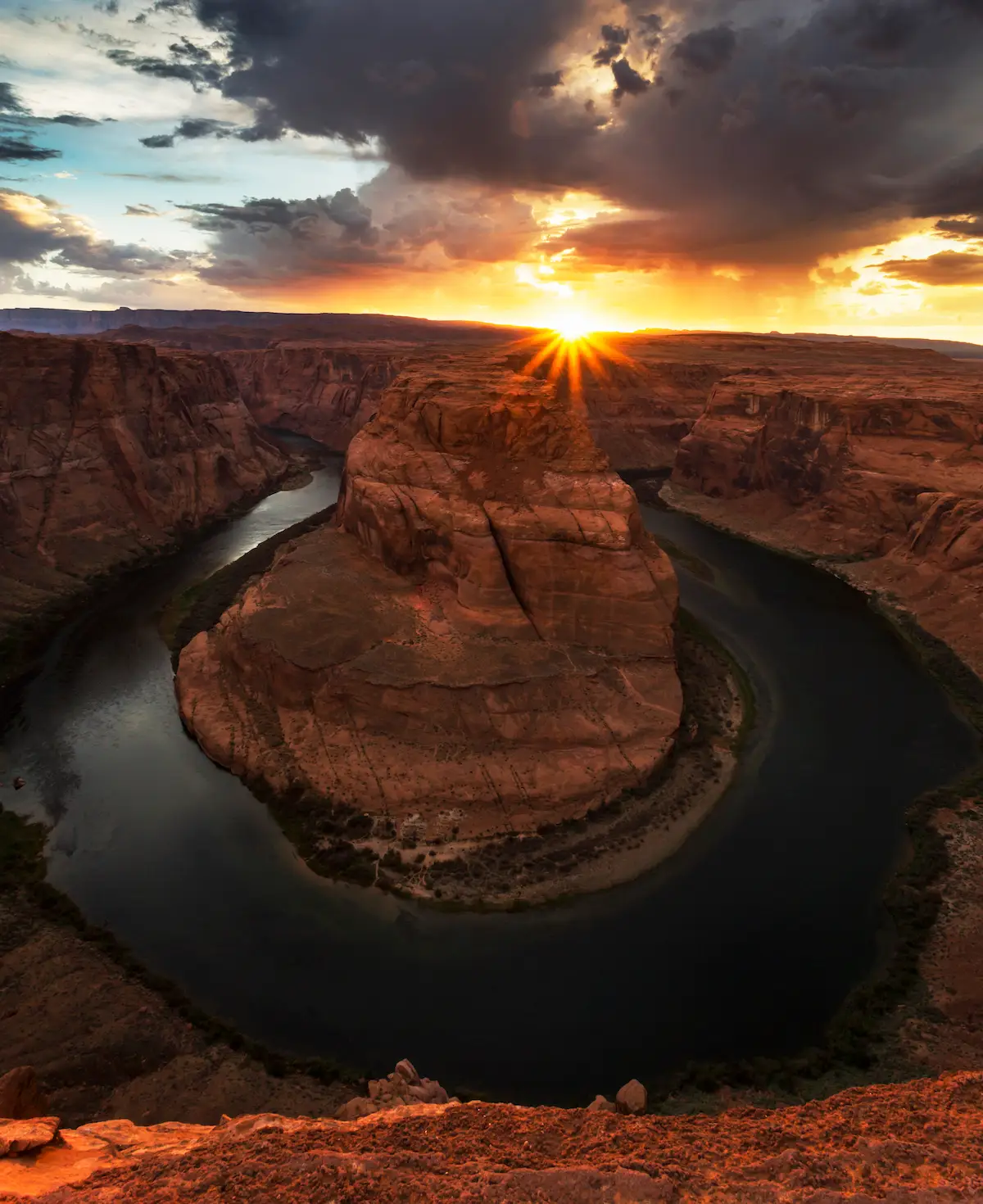
“This trip proved to be quite challenging for me. The day before, I had hiked in Marin Headlands and unfortunately encountered poison oak. It was summertime, and as we drove to various destinations like Zion, Lake Powell, and the Grand Canyon, the temperature soared to 100 degrees. Upon reaching the Grand Canyon, I began to experience itching sensations all over my hands and legs.
“Walking out to Horseshoe Bend in that intense heat felt unbearable. I feared I might collapse or lose my sanity. However, I managed to endure and waited patiently for the sunset. During that time, there were no steel barriers, allowing me to walk right up to the edge and capture photos. As the sunlight filtered through the crevices in the canyon walls, it created a breathtaking spectacle—a beautiful glow illuminating the canyon’s depths.”
– Tamang
Rodeo Beach
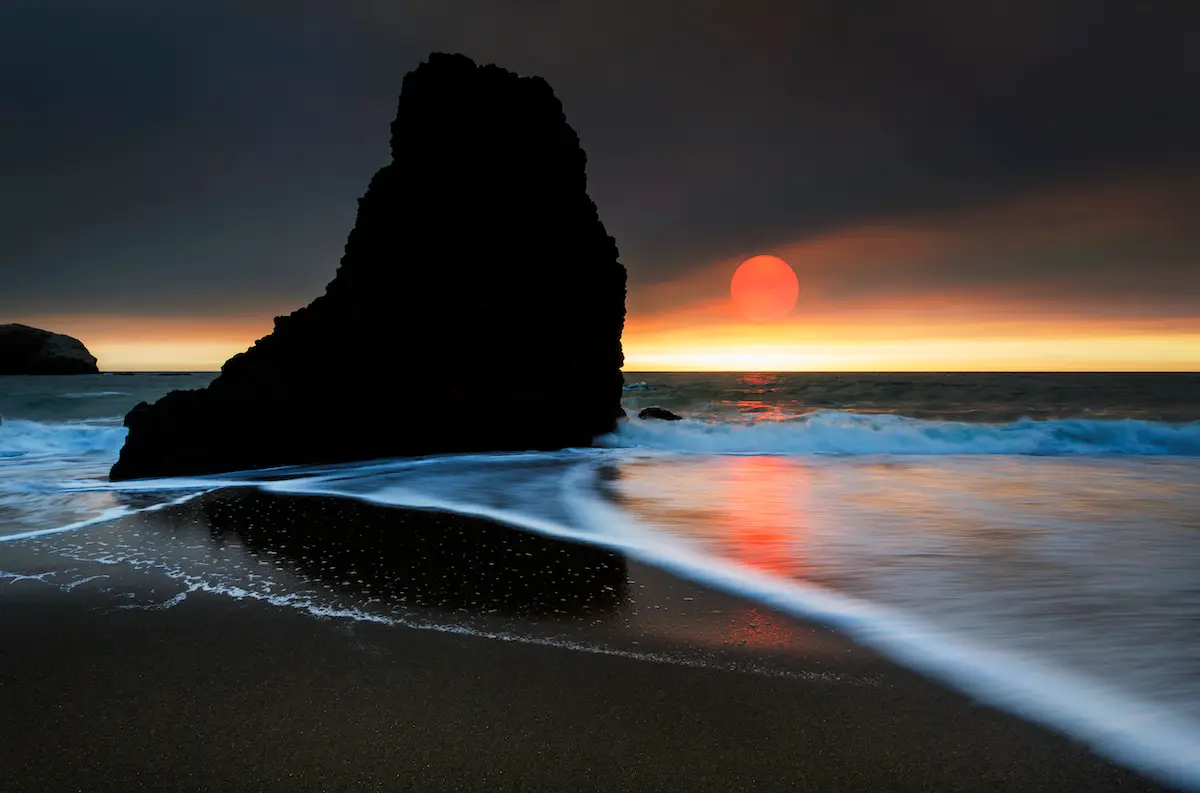
“As a photographer, I have the ability to capture the environmental impacts affecting our world. In 2020, during a significant wildfire, the sky was obscured by smoke for several days. While most people stayed indoors, I felt compelled to venture outside to observe the unfolding events. I ventured out during both sunrise and sunset.
“Amidst the smoke-covered skies, the sun appeared as a fiery red orb hovering above the ocean. It was a remarkable moment, one that may not occur again unless another wildfire occurs. Despite the environmental challenges, witnessing the red-hued light reflecting off the ocean’s surface revealed a certain beauty amidst the adversity.”
– Tamang
Yosemite’s Firefall
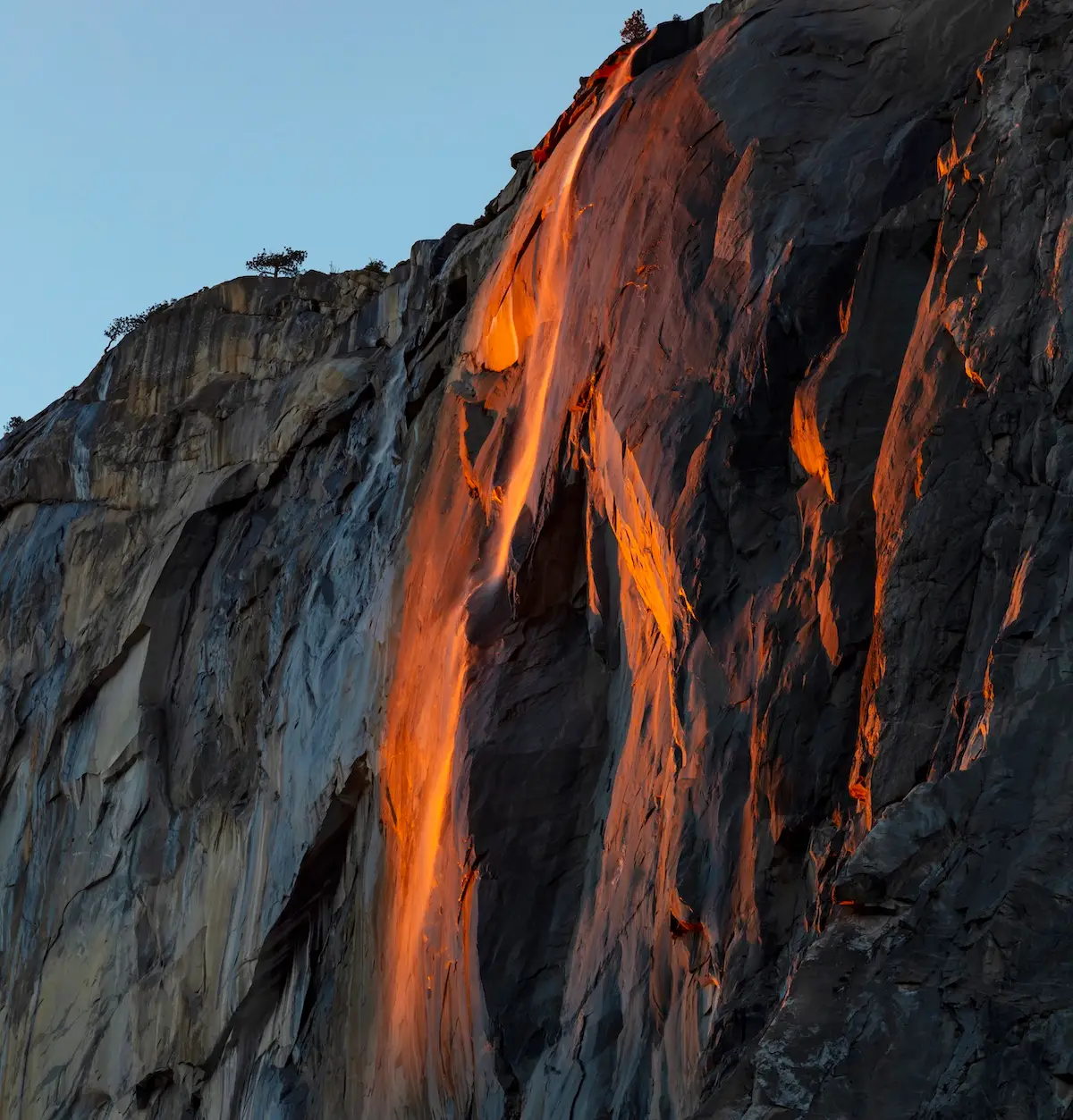
“What I learned is that in Ansel Adams’ time, nobody knew whether there was a firefall. He was shooting in black in white. Maybe people saw it and knew. Galen Rowell was the first to photograph the firefall. Now with social media, it’s so popular.
“They say it has to be perfect. Most of the time, there’s no water. When we have more snow, clear sky, and it warms up… The snow melts, and it becomes Horsetail Fall. February 10 to 28, the sunlight perfectly lines to the water. That’s when it becomes glowing red, beautiful colors. The waterfall, it changes, and the light of the sun changes. It’s phenomenal to watch. It’s not much time, a five- to eight-minute window. And it’s amazing to me. Being persistent for many years, and the one time: you get it.”
– Tamang
Crowley Lake Stone Columns, Mammoth
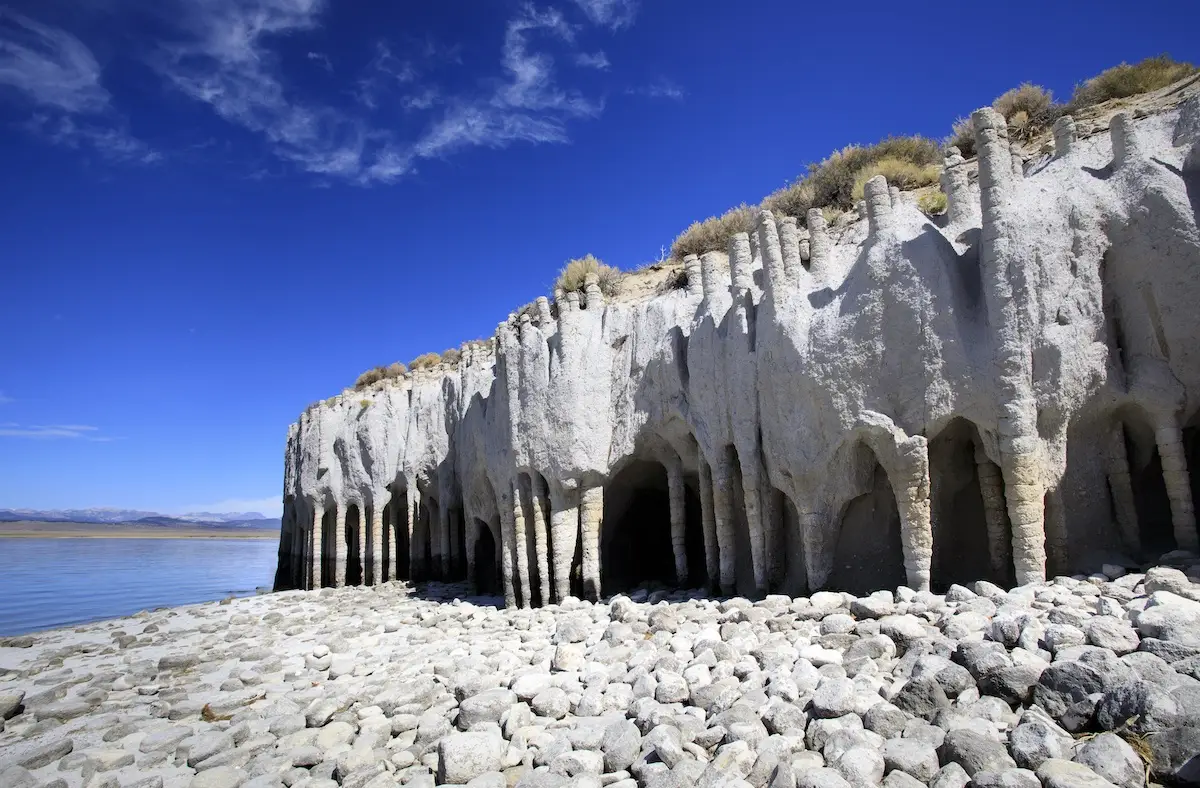
“I go to Mammoth Lake all the time — two to three times a year. I always ask the locals, hike and drive around to find new things. One time, I found it. I looked at all these columns, and it was amazing. I talked to my wife about it, and she wanted to go really badly too.
“We didn’t know how to get there. Either you take a boat or a 4×4. We got lost. We tried to take a boat, but by that time it was high tide, and you couldn’t see them. Then we took a back road, but we couldn’t find the way.
“We took days to figure out how to get there, even though you can see it clearly with your eyes. The next year, we went back and camped for five days. We were like, “Okay, now we don’t want to listen to any locals. We’re gonna take this dirt road.” It was bumpy, with sand. Before you get to the place, you get to another place where it’s steep. We couldn’t drive up it. We just parked there and walked about 40 minutes, and then we saw it. We were so happy that we saw it. We walked through the columns, and inside it’s so amazing. It looks manmade. Like pieces that you stack. It was phenomenal for me as a photographer. They’re tall. Not a lot of people know about it. It’s kind of secret and hard to get to.”
– Tamang
Blood Moon, seen from the Marin Headlands

“Everyone was talking about it. I knew it wasn’t at night, but around one o’clock in the morning. First, I went to Greenbrae by the water, hoping the blood moon would be over Mount Tam. I waited for a while, but I couldn’t figure out the composition between Mt. Tam and the moon.
“So I go to the Marin Headlands, and I park by the Marin side of the Golden Gate by the restrooms.
“Everyone was driving trying to see the moon. It was right above the road, a beautiful, huge blood moon. I took a minute to think how I wanted to take the picture. I thought, ‘I’m going to sit there, and I want cars to go by me to see the painted lights and the blood moon.’
“Sometimes when I take a photo, I don’t want to just go and take the photo. I want to go and breathe with it. Meditate. I want to connect and understand nature, the behavior, wind, everything. And then I start taking photos.
“This photo requires two photos: one for the moon and one for the foreground. The moon moves, and you need to freeze the motion. Seeing through the eyes and taking the photo is different. In the camera’s eyes, it sees a moving subject, so we need to freeze the subject in order to see what we saw with our eyes. Then you combine them.”
– Tamang
Rodeo Beach
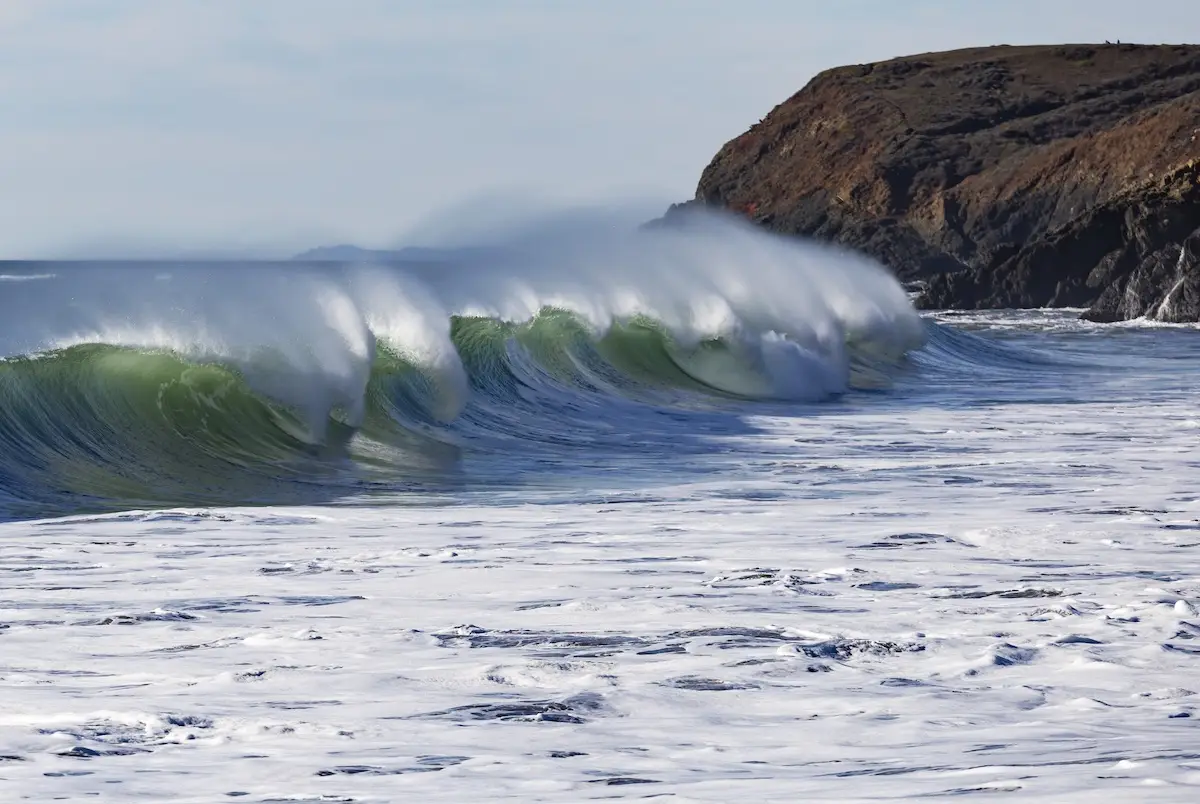
“Most of the time, you might not be able to see big waves at rodeo beach. If I remember, this was during a time with a lot of rain. There was one time there was supposed to be high waves, and I went there. You don’t always see high waves here. The waves were just crashing, and I thought “Okay, I’m gonna take it.” Totally cool thing.”
– Tamang
Snow on Mount Tam
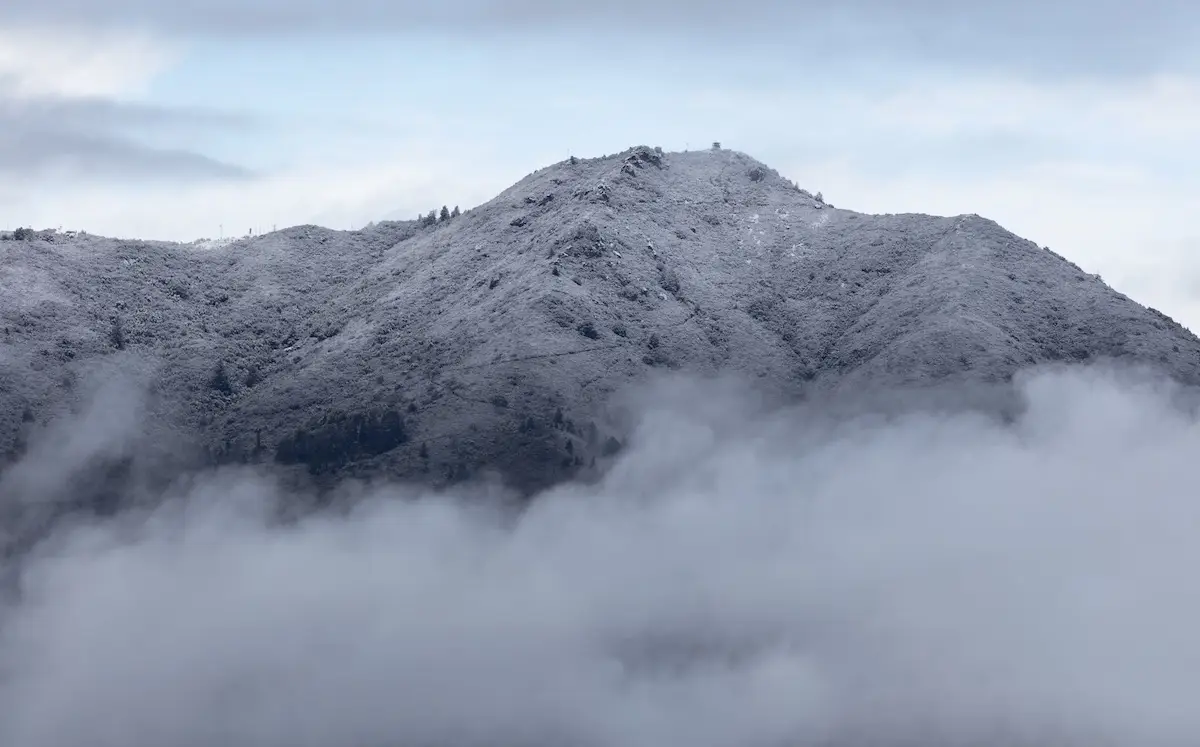
“I had a ten minute break, so I took twenty minutes and took pictures. We don’t get snow here. So I went up by the fire department and took shots of this. I had to take pictures. So I went from work. For me, Mt. Tam is an odd competition to take the photo. I don’t have Mount Tam in my photos.”
– Tamang
Canyonlands in Moab, Utah

“When I saw this, I couldn’t believe it. When you look at it from the other side, it looks manmade. It looks like someone attached the arch. This is why I’m curious to see nature. It brings me peace to watch the natural phenomena. A beautifully arched rock and the sun coming through… To be able to capture that moment and share it with viewers, it makes me feel good. When the sun hits, it’s like a painting.”
– Tamang
Cataract Falls
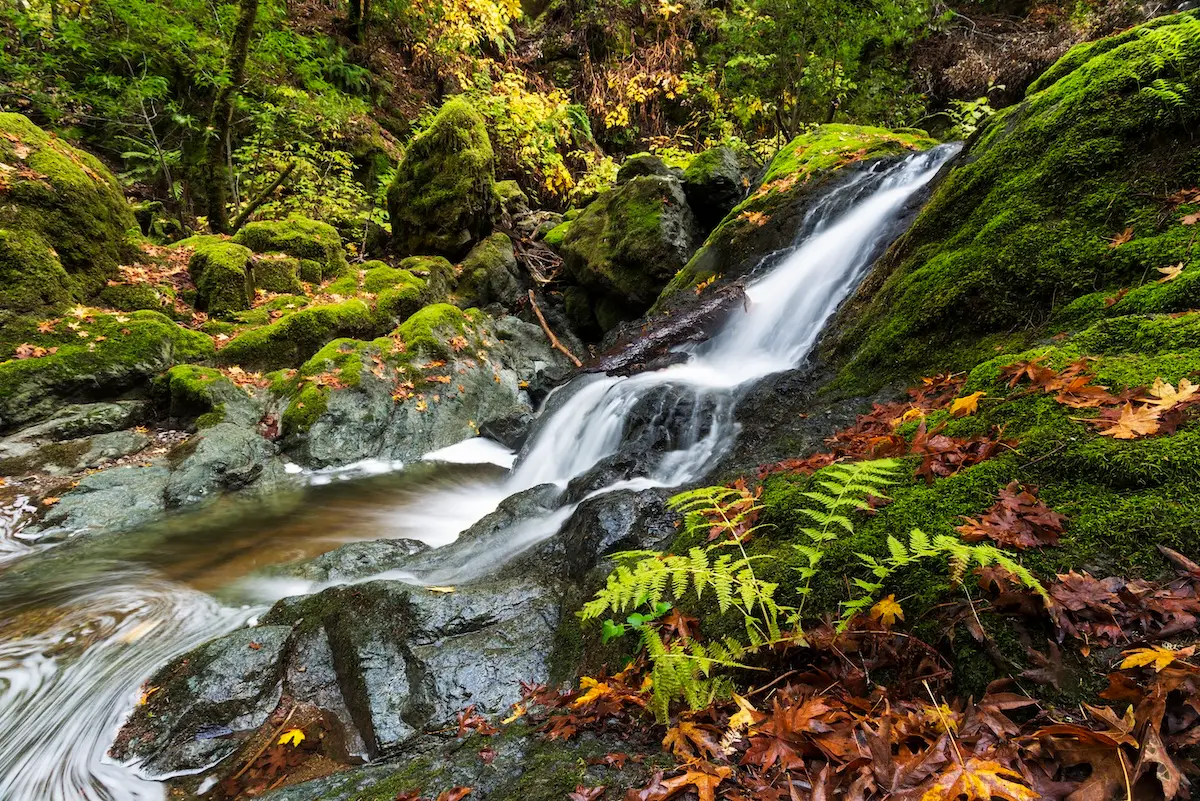
“This was the year we had a lot of water. Cataract Falls is unique. Not everyone goes there, but to me it’s unique, walking through the Cascade Canyon through the beautiful trees, the sound of water. It’s peace. I like hiking that trail. For me, I like to listen to the water, the river, the sound, the wind, the whistling wind. I like to see the trees and observe everything around me and learn from them. As we know, nature has different seasons. This picture is one of Cataract Falls in the fall, when the colors turn yellow, orange, purple. In the fall, I like the trees, the red. In the morning, the sun was a warm light coming through, making it more beautiful.”
–Tamang

